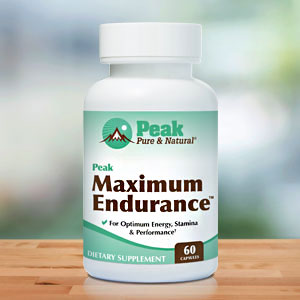In the 5th century B.C., the Greek physician Hippocrates said that “all parts of the body, if used in moderation and exercised in labors to which each is accustomed, become thereby healthy and well developed and age slowly …”
Translation: moderate exercise on a regular basis can help a person stay healthy as they age. We’re talking about fast walking, running, swimming, cycling, dancing, hiking and squats — things that increase your heart and breathing rate.
Hippocrates also warned that if all parts of the body “are unused and left idle, they become liable to disease, defective growth and age quickly.”
Jump forward to the modern age and there is no shortage of research proving the incredibly far-reaching effects of exercise on our health.
In fact, in a review of the Health Benefits of Exercise, the authors state, “Overwhelming evidence exists that lifelong exercise is associated with a longer health span, delaying the onset of 40 chronic conditions/diseases.”
If you’re not taking exercise seriously, here’s what you could be in for…
Major health concerns tied to lack of exercise
I’d like to highlight three areas in particular where the researchers find the lack of physical activity to have a significant impact. These won’t surprise you, but the full list we’ll get to later might.
Cardiovascular respiratory fitness or CRFis commonly measured by maximal oxygen uptake, VO2max. Research has reported that men who transitioned from having low to high CRF decreased their mortality risk by 50% over an 8-yr period, whereas men who transitioned from having high to low CRF increased their mortality risk by 50%. Low CRF is also well established as an independent risk factor of type 2 diabetes. In fact, experts would argue that CRF may be the most significant factor for health — and exercise or lack of it has a major impact on increasing or decreasing CRF.
Mental health. It’s not hard to believe that getting your heart pumping can be an antidote to depression and anxiety while having a powerful impact on cognition. Exercise affects the formation of new blood vessels in the brain; the expression of growth factors in the hippocampus, such as brain-derived neurotrophic factor (BDNF) and Insulin-like growth factor 1 (IGF-1), necessary for connections and communications in the brain; as well as brain transmitters and “mood hormones” including dopamine, glutamate, norepinephrine and serotonin.
Type 2 Diabetes (T2D). In 2000, The Framingham Offspring study found a strong genetic predisposition for T2D, but lifestyle heavily influences the disease. As you may have guessed, exercise is the lifestyle factor with the most substantial impact on T2D.
In the last 25 years, three major studies have found that exercise or a combination of exercise and diet reduced the onset of T2D from 46% to as high as 58%. One study was on a Chinese population, another on a Finnish population and lastly, a U.S. population. According to researchers, if genetic differences in the different study populations are not a factor, combined exercise and diet remain more effective in T2D prevention than the drug metformin two decades ago.
40 conditions strongly impacted by the power of exercise
The authors of the Health Benefits of Exercise, Gregory N. Ruegsegger and Frank W. Booth, put together a list of “Worsening of 40 conditions caused by the lack of physical activity with growth, maturation, and aging throughout life span.”
Here is their complete list:
1. Accelerated biological aging/premature death
2. Aerobic (cardiorespiratory) fitness
3. Arterial dyslipidemia (High cholesterol is one component of dyslipidemia, while dyslipidemia can refer to an imbalance in one or more of the three lipids: triglycerides, HDL and LDL.)
4. Balance
5. Bone fracture/falls
6. Breast cancer
7. Cognitive dysfunction
8. Colon cancer
9. Congestive heart failure
10. Constipation
11. Coronary (ischemic) heart disease
12. Deep vein thrombosis
13. Depression and anxiety
14. Diverticulitis
15. Endometrial cancer
16. Endothelial dysfunction
17. Erectile dysfunction
18. Gallbladder diseases
19. Gestational diabetes
20. Hemostasis
21. Hypertension
22. Immunity
23. Insulin resistance
24. Large arteries lose more compliance with aging
25. Metabolic syndrome
26. Nonalcoholic fatty liver disease
27. Obesity
28. Osteoarthritis
29. Osteoporosis
30. Ovarian cancer
31. Pain
32. Peripheral artery disease
33. Preeclampsia
34. Polycystic ovary syndrome
35. Prediabetes
36. Rheumatoid arthritis
37. Sarcopenia
38. Stroke
39. Tendons being less stiff
40. Type 2 diabetes
All in all, I hope I’ve given you a wake-up call to get off that couch and start a regular exercise program that will see you through to your golden years!
Sources:
Health Benefits of Exercise — Cold Spring Harbor Perspectives in Medicine
4 ways exercise helps fight aging — Time
Read full article here




